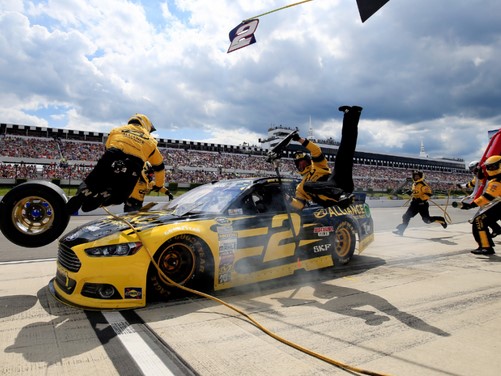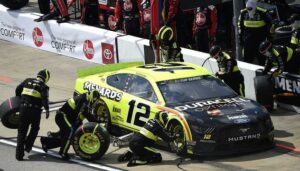
Velocity in the Pit Lane: Soaring Through The Racing Hub
Winchester Speedway, renowned for its high-banked half-mile oval and adrenaline-pumping races, is not only a battleground on the track but also a hive of intense activity in the pit lane. Flying through the pit lane at Winchester Speedway is a carefully orchestrated dance of speed, precision, and strategy that plays a pivotal role in the overall narrative of motorsports at this iconic venue.

The Pit Lane Pulse: A Hub of Activity
The pit lane at Winchester Speedway is more than a designated area for pit stops; it’s the beating heart of the racing action. Stretching alongside the track, the pit lane is a dynamic space where teams spring into action, executing lightning-fast maneuvers to keep their machines in peak condition and maintain a competitive edge.
High-Stakes Pit Stops: The Art of Efficiency
Pit stops at Winchester Speedway are not leisurely affairs; they are high-stakes moments where every second counts. The art of efficiency becomes paramount as pit crews, equipped with specialized tools and fueled by adrenaline, swarm around the race car. Tire changes, refueling, and adjustments must be executed with speed and precision to minimize time lost on the track.
Split-Second Decision-Making: The Pit Crew’s Challenge
The pit crew’s challenge goes beyond mechanical prowess; it involves split-second decision-making. Teams must assess the state of the race, the condition of the car, and the overall strategy to determine the optimal actions during a pit stop. The ability to make quick and accurate decisions is a hallmark of a successful pit crew at Winchester Speedway.
The Speed Factor: Rapid-Fire Maneuvers
Flying through the pit lane is a literal manifestation of speed at Winchester Speedway. As race cars decelerate into the pit lane, the pit crew springs into action with choreographed precision. From jackmen lifting the car to tire changers working in synchronized harmony, each member contributes to the rapid-fire ballet that unfolds in mere seconds.
Strategic Pit Stops: A Chess Game on Asphalt
Pit stops at Winchester Speedway are not just about mechanical maintenance; they are strategic moves in a chess game played on asphalt. Teams strategize when to pit, whether to change tires, adjust the car’s setup, or refuel. The timing of these moves can make the difference between victory and defeat, adding an extra layer of intrigue to the race.
Fueling the Race: Precision at the Pump
Refueling during a pit stop is a delicate dance that requires precision and timing. Winchester Speedway’s pit crews must navigate regulations and safety protocols while ensuring that the car receives the right amount of fuel to complete the next segment of the race. Efficient fueling is a critical component in the quest for victory.
The Pit Crew’s Ballet: Specialized Roles
Each member of the pit crew at Winchester Speedway has a specialized role, contributing to the overall efficiency of the pit stop ballet. From tire changers wielding pneumatic guns to fuelers with gravity-fed nozzles, every task is assigned to a specialist who performs it with practiced skill. This division of labor is essential for maximizing speed and minimizing errors.
Precision Technology: Tools of the Trade
The pit lane at Winchester Speedway is not only a showcase of human skill but also a realm of advanced technology. Specialized tools, such as pneumatic guns for rapid tire changes and high-tech diagnostic equipment, enhance the efficiency of pit stops. Technology and human expertise converge to create a seamless and high-velocity pit lane experience.
Communication Is Key: Driver-Crew Interaction
Effective communication between the driver and the pit crew is a linchpin of successful pit stops at Winchester Speedway. Hand signals, radio communication, and even eye contact play a crucial role in conveying information about the car’s condition, any necessary adjustments, and the overall race strategy. The seamless flow of information ensures that pit stops are executed with precision.
The Pit Lane Clock: Counting Every Second
In the pit lane at Winchester Speedway, time is both friend and foe. The clock becomes an omnipresent force, ticking down the seconds of each pit stop. Pit crews aim to achieve sub-10-second stops, and every fraction of a second matters. The relentless countdown adds a sense of urgency to the pit lane dynamics.
Pit Stops as Turning Points: Race Strategy Unfolds
Pit stops at Winchester Speedway often serve as turning points in the race. The strategic decisions made during these stops can reshape the narrative, catapulting a team to the front or causing a shuffle in the pack. The ebb and flow of the race are intricately tied to the execution and timing of pit stops, creating a dynamic and fluid competition.
Pit Lane Safety: Balancing Speed and Caution
While speed is paramount in the pit lane, safety remains a non-negotiable priority. Winchester Speedway’s pit crews adhere to strict safety protocols to prevent accidents and injuries during pit stops. The balance between speed and caution underscores the professionalism and discipline of the pit crews at this iconic racing venue.
The Fan Experience: Pit Lane Access
For fans at Winchester Speedway, the pit lane is not just an operational zone—it’s an up-close encounter with the pulse of motorsports. Many racing events at Winchester Speedway offer pit lane access, allowing fans to witness the intensity of pit stops, interact with teams, and feel the reverberations of roaring engines as cars speed in and out.
Pit Lane Etiquette: A Ballet of Respect
Pit etiquette is a ballet of respect among competing teams at Winchester Speedway. Shared spaces demand a level of courtesy and cooperation despite the intense competition on the track. The unwritten rules of pit lane conduct contribute to the camaraderie and sportsmanship that define motorsports.
Unforeseen Challenges: Pit Stops Gone Awry
Despite meticulous planning, pit stops at Winchester Speedway are not immune to unforeseen challenges. Equipment malfunctions, miscommunications, or unexpected incidents on the track can disrupt the fluidity of a pit stop. How teams adapt to these challenges often becomes a testament to their resilience and ability to think on their feet.
Night Pit Stops: Racing Under the Lights
As the sun sets over Winchester Speedway, pit stops take on a different ambiance. Night racing adds an extra layer of challenge to pit lane activities. The glow of pit lane lights, the shimmering reflections off helmets, and the urgency of nighttime competition create a visually striking and memorable experience for fans and participants alike.
Evolution of Pit Stop Strategies: From Past to Present
The strategies employed in pit stops at Winchester Speedway have evolved over the years. Technological advancements, rule changes, and shifts in racing dynamics have influenced how teams approach pit stops. What was once a straightforward tire change has transformed into a multi-faceted and strategic dance that can sway the outcome of a race.
The Pit Lane Legacy: A Crucible of Champions
Winchester Speedway’s pit lane is a crucible where champions are forged. The legacy of iconic pit stops, strategic brilliance, and precision teamwork contributes to the lore of this historic venue. The pit lane is not just a functional space; it’s a stage where the drama of motorsports unfolds in high-speed and high-stakes fashion.
Conclusion: Symphony of Speed
Flying through the pit lane at Winchester Speedway is a symphony of speed, precision, and strategy. The choreographed ballet of pit stops, the roar of engines, and the relentless ticking of the pit lane clock create an atmosphere that embodies the essence of motorsports. As cars zoom in and out, pit crews execute their maneuvers, and fans soak in the intensity, the pit lane becomes an integral part of the Winchester Speedway experience—an adrenaline-fueled theater where the drama of racing reaches its crescendo.
